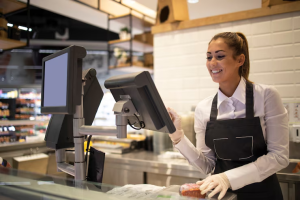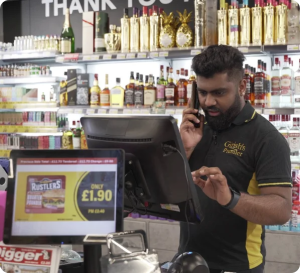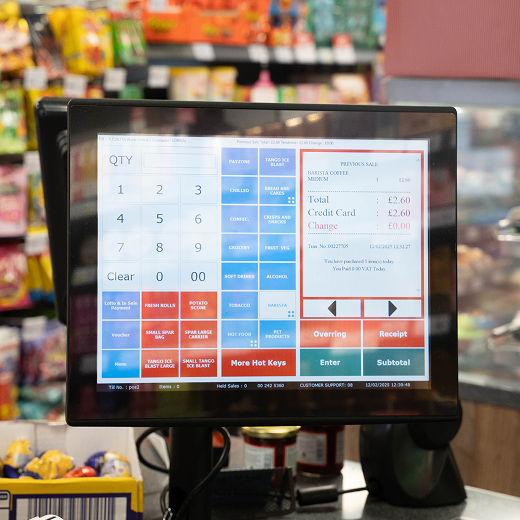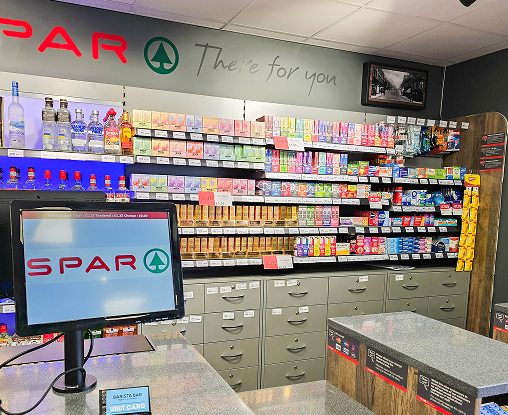In an age where automation and data accuracy define business success, EPOS (Electronic Point of Sale) systems have become essential across all types of enterprises. Whether you run a bustling high street convenience store or manage a large-scale wholesale distribution business, the right EPOS system can significantly boost efficiency, accuracy, and customer satisfaction.
But one size does not fit all.
There are crucial differences between wholesale and retail EPOS systems, differences that can impact your operations, profit margins, and customer relationships. This article will walk you through everything you need to know about how these systems differ, and why choosing the right one matters.
Understanding the Core Difference
At the most basic level, retail EPOS systems are designed for high-volume, fast-paced, customer-facing environments. Think convenience stores, clothing shops, or cafés—where speed and simplicity matter.
Wholesale EPOS systems, on the other hand, are designed for business-to-business (B2B) environments. These businesses deal with large orders, complex pricing structures, and account-based customers. The EPOS needs to support bulk transactions, scheduled deliveries, and invoicing.
EPOS Systems replaces traditional cash registers and adds layers of functionality—helping businesses track real-time sales, monitor inventory levels, and improve overall operations. But not all EPOS systems are built the same.
The demands of a retail store differ vastly from those of a wholesale warehouse, and so do their EPOS systems.
1. Customer Type and Buying Behaviour
EPOS systems must align with the type of customer they serve—business buyers or everyday consumers.
Wholesale EPOS
Wholesalers primarily serve other businesses (B2B), such as retailers or distributors. These clients often:
- Place bulk orders on a regular basis
- Require customised pricing and payment terms
- Expect invoice-based transactions and credit facilities
Because of this, wholesale EPOS systems need features that handle account-based selling, repeat orders, and bulk discounts. The customer journey is longer and more transactional than in retail.
Retail EPOS
Retailers cater directly to individual customers (B2C). These buyers:
- Make one-off or frequent small purchases
- Expect fast checkout experiences
- Use a variety of payment methods, including contactless and mobile
Retail EPOS systems prioritise speed, ease-of-use, and features like loyalty programmes, gift cards, and real-time promotions.
2. Inventory Management Needs
Both retail and wholesale businesses manage stock—but the level of complexity varies.
Wholesale EPOS
Wholesalers handle larger quantities of fewer items and require advanced inventory features. Their systems need to:
- Track items by units, cases, or pallets
- Support multi-warehouse operations
- Monitor batch numbers, expiry dates, and stock movement
- Provide stock valuation reports (e.g. FIFO or LIFO)
A wholesale EPOS system often includes tools for automated reordering, supplier integration, and inventory forecasting.
Retail EPOS
Retailers manage a broader variety of products but usually in smaller quantities. Their focus is on:
- Real-time stock level updates after each sale
- Managing product variants (e.g. sizes, colours, flavours)
- Low stock alerts and simple barcode-based tracking
Retail EPOS systems make it easy to manage high-SKU environments such as fashion outlets or convenience stores, where fast stock turnover is common.
3. Pricing Models and Flexibility
How you price your products matters—and EPOS systems must support different pricing strategies.
Wholesale EPOS
Pricing in wholesale is often client-specific and volume-based. Wholesale EPOS must allow:
- Multiple price tiers for the same product
- Custom pricing contracts per client
- Discounts based on order quantity
- VAT-exempt or inclusive pricing based on region or customer type
For instance, a wholesaler may charge £10 per unit for small orders but reduce it to £8 per unit for bulk purchases.
Retail EPOS
Retailers usually have standardised pricing, visible to all customers. Retail EPOS systems support:
- Markdowns and special offers
- Voucher codes and multi-buy promotions
- Loyalty rewards or cashback schemes
The focus is on running short-term sales, engaging customers, and maximising average order value.
4. Order Size and Fulfilment Process
EPOS systems must handle how sales are processed and fulfilled, from checkout to delivery.
Wholesale EPOS
Wholesalers deal with larger, planned orders, which may not be fulfilled all at once. Their systems must:
- Generate and manage quotes, invoices, and credit notes
- Handle part shipments and backorders
- Sync with warehouse and logistics platforms
- Include workflows for picking, packing, and dispatching
They often integrate with freight or delivery management tools to ensure smooth order fulfilment.
Retail EPOS
Retailers handle immediate, in-person transactions. Retail EPOS focuses on:
- Quick payment, printing receipts, and updating inventory instantly
- Handling refunds, exchanges, or split payments
- Offering delivery or click-and-collect (if omnichannel)
Retail EPOS doesn’t typically deal with complex shipping or backordering systems.
5. Payment Methods and Credit Control
How customers pay—and when—is a major difference between retail and wholesale operations.

Wholesale EPOS
Payments are rarely instant in wholesale. These systems offer:
- Credit limits and payment-on-account functionality
- Support for bank transfers, cheques, or delayed payments
- Automatic generation of invoices and tracking of outstanding balances
Wholesale EPOS often links to accounting software like Xero or Sage for streamlined financial reporting.
Retail EPOS
Retail payments are fast and customer-facing. Retail EPOS includes:
- Instant card, cash, or contactless payments
- Integration with mobile wallets like Apple Pay or Google Pay
- Optional support for buy-now-pay-later services (e.g. Klarna)
There’s little need for credit terms in a typical retail setup.
6. Customer Relationship Management (CRM)
Tracking customer information helps both wholesalers and retailers—but in different ways.
Wholesale EPOS
Wholesalers need detailed records of each business client. CRM features include:
- Purchase history and frequency tracking
- Account-specific pricing and terms
- Sales rep assignment and client notes
- Reordering reminders and credit limit tracking
This helps maintain long-term B2B relationships and forecast sales trends.
Retail EPOS
Retail CRM tools are focused on individual engagement. Features include:
- Loyalty schemes and digital punch cards
- Targeted email marketing (e.g. birthday discounts)
- Collecting data for personalised promotions
Retail EPOS helps drive repeat visits and larger baskets.
7. Hardware and Setup Requirements
The physical tools connected to an EPOS system vary based on the environment.
Wholesale EPOS
Wholesale businesses operate in warehouses or industrial settings, so their hardware includes:
- Desktop terminals for offices
- Rugged barcode scanners for stock control
- Label printers and receipt/invoice printers
- Handheld devices for picking and delivery checks
The focus is on durability and efficiency in a logistics-heavy environment.
Retail EPOS
Retailers need sleek, compact setups suited to customer-facing counters. Hardware typically includes:
- Touchscreen till systems or tablets
- Barcode scanners and receipt printers
- Self-service kiosks or mobile EPOS for pop-ups or queues
Retail hardware is often more aesthetically designed to match branding and customer experience.
8. Analytics and Business Insights
Reporting tools help managers track performance, optimise stock, and forecast growth.
Wholesale EPOS
Wholesale systems offer deep, account-based insights such as:
- Gross margin analysis per product/client
- Stock ageing and excess inventory alerts
- Performance by sales rep or region
- Forecasting based on reorder patterns
These tools support strategic planning and bulk buying decisions.
Retail EPOS
Retail analytics are more focused on daily performance, including:
- Hour-by-hour revenue tracking
- Bestselling and underperforming products
- Campaign ROI and footfall trends
- Staff performance metrics
Retailers can quickly adjust pricing, displays, and promotions based on these insights.
9. Integration with Other Tools
Connecting your EPOS system with other software is critical for smooth operations.
Wholesale EPOS
Wholesale systems typically integrate with:
- Enterprise Resource Planning (ERP) tools
- Delivery and warehouse management systems
- Accounting software and CRM platforms
- Supplier ordering platforms
These integrations support the complex supply chain of a wholesaler.
Retail EPOS
Retail systems often plug into:
- eCommerce platforms like Shopify or WooCommerce
- Payment gateways and loyalty apps
- Email marketing tools like Mailchimp
- Customer review systems
Retail EPOS focuses on enhancing the customer shopping experience.
Mistakes to Avoid When Selecting a System
One of the most common mistakes is using a retail-focused EPOS in a wholesale setting. These systems usually lack bulk order handling, tiered pricing, and invoice support—features essential for wholesale operations.
Another pitfall is ignoring integration with delivery and accounting tools. Without proper syncing, you may find yourself constantly updating systems manually, which wastes time and leads to errors.
It’s also risky to choose a system based purely on price. The cheapest option might not offer the customisation you need, which can cost you more in the long run due to inefficiencies or add-ons.
Some businesses go the other way and overcomplicate their retail EPOS by adding unnecessary features meant for large enterprises. Keep it simple—only choose what you genuinely need.
Lastly, many businesses neglect training and support. No matter how intuitive a system seems, your staff still need training to use it efficiently. Ongoing support is equally important for updates, troubleshooting, and long-term success.
Future Trends in EPOS Systems
AI-Powered Forecasting
Modern EPOS systems will use artificial intelligence to analyse trends and suggest what to reorder, reducing waste and avoiding stockouts.
Voice-Activated EPOS
Especially helpful in fast-moving settings like cafés, voice-activated systems speed up tasks and improve hygiene.
Mobile-First Interfaces
Wholesale reps can place orders directly from mobile apps while visiting clients—no paperwork needed.
Blockchain Integration
Track every step of your supply chain via your EPOS system. This builds trust, improves transparency, and reduces counterfeiting.
Augmented Reality (AR)
Expect retail EPOS to support AR experiences—scan a product to see reviews, demos, or upsells on-screen in real time.
Why MPOS Is a Fantastic Retail EPOS System: Features and Benefits
MPOS is developed by MHouse Business Solutions Ltd, a UK-based company with 40+ years of experience, trusted by over 1,200 clients and powering more than 2,000 tills. Unlike generic systems, MPOS’s full-service EPOS is tailored to the unique workflows and challenges of convenience stores, aiming to boost your sales, streamline your operations, and optimise every part of your store.

User-Friendly Interface and Sleek Hardware
MPOS is designed with simplicity and efficiency in mind. Its modern, sleek hardware fits perfectly into any retail environment, from small convenience stores to busy boutiques. The touchscreen interface is intuitive, making it easy for staff to learn and use quickly. This means faster checkouts, fewer errors, and a smoother experience for your customers.
Real-Time Stock Management
One of MPOS’s standout features is its real-time inventory tracking. As items are sold, the system updates stock levels instantly, helping you avoid surprises like running out of popular products. This feature saves time and reduces losses by ensuring you reorder the right products at the right time.
Integrated Payment Options
MPOS supports a wide range of payment methods, including chip-and-pin, contactless payments, mobile wallets, and cash. This flexibility speeds up the checkout process and caters to the diverse preferences of today’s shoppers, helping you serve more customers efficiently.
Seamless Integration with Other Systems
MPOS can easily integrate with your existing accounting software and eCommerce platforms. This means your sales data syncs automatically across your online and physical stores, reducing manual work and the risk of errors. It streamlines your business operations and gives you a clear, consolidated view of your finances.
Robust Reporting and Analytics
MPOS offers detailed sales reports and insights, allowing you to track what’s selling best, peak sales times, and customer preferences. These insights empower you to make informed decisions on stock management, promotions, and staffing, helping your store run more profitably.
UK-Based Customer Support
A great EPOS system is nothing without reliable support. MPOS provides UK-based customer service, offering training, troubleshooting, and ongoing updates to keep your system running smoothly. This local support means help is just a call away when you need it.
Scalable and Future-Ready
Whether you’re running a single store or planning to expand, MPOS grows with you. Its scalable design means you can add new registers, integrate with more systems, and handle increasing transaction volumes without hassle.
Conclusion: Choose Based on Your Needs
The key to choosing the right EPOS system is understanding how your business operates. Wholesale and retail EPOS systems differ significantly in features, setup, and target users. Here’s a quick comparison:
- Customer Type: Wholesale EPOS is tailored for business clients (B2B), while retail EPOS caters to individual consumers (B2C).
- Inventory Management: Wholesalers handle bulk and complex stock structures, while retailers focus on fast-moving, simple items.
- Pricing Structures: Wholesale pricing is usually custom or tiered by volume; retail pricing is more fixed and driven by promotions.
- Order Size: Wholesale orders are large and scheduled, while retail orders are small and immediate.
- Payment Methods: Wholesale systems often support credit and invoicing, whereas retail transactions are settled instantly by card or cash.
- CRM Features: Wholesale EPOS focuses on account-based CRM tools, while retail systems emphasise loyalty and personalised engagement.
- Hardware Needs: Wholesale setups use warehouse tools like rugged scanners and terminals, while retail uses sleek tills and self-service kiosks.
- Reporting & Analytics: Wholesale systems offer deep insights into margins and forecasts, while retail analytics focus on sales trends and footfall.
- Integration: Wholesale EPOS often integrates with ERP and logistics systems, whereas retail EPOS is usually linked with eCommerce and marketing platforms.
Feature | Wholesale EPOS | Retail EPOS |
| Customer | Business (B2B) | Consumers (B2C) |
| Orders | Bulk, pre-planned | Instant, individual |
| Inventory | Pallets/cases | SKUs/variants |
| Payments | Invoiced, credit | Immediate, varied |
| Pricing | Custom/tiered | Fixed/promotional |
| CRM | Account-driven | Loyalty-driven |
| Reporting | Forecast-based | Daily/real-time |
| Hardware | Warehouse-grade | Customer-friendly |
By identifying these differences and aligning them with your specific needs, you can choose a system that not only supports your daily operations but also grows with your business. Whether you run a bustling shopfront or manage a network of trade clients, the right EPOS will improve efficiency, boost customer satisfaction, and set you up for long-term success.















